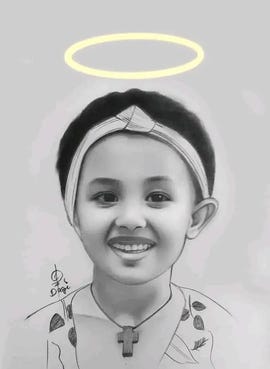Tragedies often leave indelible marks on society, and the case of Heaven Awot is one such event that has deeply affected many. The story of this young girl's life being cut tragically short has sparked widespread outrage and calls for justice across Ethiopia and beyond. As we delve into the details surrounding her death, it becomes essential to understand not only the facts but also the societal implications and reactions that followed.
Heaven Awot's story serves as a stark reminder of the vulnerabilities faced by children in certain environments and the urgent need for stricter laws and enforcement mechanisms to protect them. This article aims to explore the circumstances surrounding her tragic demise, focusing on the autopsy report findings and the public response. Through an examination of these elements, we hope to uncover the truth behind her loss and highlight the broader issues at play.
The finalized autopsy report reveals that little Elena's cause of death was non-accidental blunt force trauma. This shocking revelation adds another layer of tragedy to the already heart-wrenching story. The Kentucky State Police conducted DNA tests which corroborated the violent nature of her passing. The investigation into Heaven Awot’s murder has been extensive, with significant attention drawn towards ensuring justice for this innocent child.
Understanding the Autopsy Findings
As part of the forensic analysis, detailed examinations were carried out to determine specific injuries sustained by Heaven Awot. These investigations highlighted severe trauma inflicted upon her body, underscoring the brutality involved in her killing. Medical experts examined every aspect meticulously, aiming to piece together what exactly happened during those final moments.
Further insights from radiology and clinical assessments revealed congenital agenesis of lumbar vertebrae in unrelated cases involving animals. While this condition does not relate directly to Heaven's situation, understanding various medical conditions helps build comprehensive knowledge within forensic sciences. Such studies contribute significantly toward improving diagnostic accuracy in future cases.
Visual evidence captured post-autopsy showed normality in areas like thoracic vertebrae, sacrum, ribs among others. However, these images served more than just documentation purposes; they provided critical clues aiding investigators in piecing together events leading up to her untimely demise. Each detail discovered played a crucial role in building a clearer picture of the crime scene.
Public Reaction and Societal Impact
News of Heaven Awot's brutal murder sent shockwaves throughout Ethiopia, igniting fury over the lenient sentencing handed down to her killer, Getnet Baye. Many citizens expressed their dissatisfaction through protests and petitions demanding harsher penalties for such heinous crimes against children. The outcry reflected deep-seated concerns regarding safety measures available for young girls in similar situations.
Ethiopia witnessed widespread condemnation following the court's decision to impose only a 25-year prison term despite overwhelming evidence pointing towards premeditated violence. An online petition garnered substantial support as people united under the banner of justice for Heaven. This collective voice emphasized the necessity for reforming legal systems capable of addressing gender-based violence effectively.
Moving forward, discussions around rising sexual violence against women and girls have intensified, emphasizing systemic failures contributing to such occurrences. Organizations like Addis Standard continue advocating for policy changes aimed at safeguarding vulnerable populations while holding perpetrators accountable for their actions. It remains vital that societies worldwide learn from tragedies like Heaven's so that meaningful progress can be achieved.
Raising Awareness Through Social Media Platforms
Social media platforms played a pivotal role in amplifying awareness about Heaven Awot's case globally. Hashtags related to her name quickly trended across Twitter (now X), drawing international attention to issues surrounding content moderation practices employed by tech giants. Critics argue that insufficient safeguards allowed harmful material linked to her murder to circulate freely online.
TikTok emerged as both a platform where users shared updates concerning the investigation and a space critiqued for its inability to manage sensitive content responsibly. Calls increased urging companies to adopt stricter guidelines regulating user-generated content potentially violating ethical standards or exacerbating trauma experienced by victims' families.
In conclusion, examining the aftermath of Heaven Awot's tragic death offers valuable lessons regarding societal responsibilities in protecting our youngest members. By fostering open dialogues around accountability, justice, and prevention strategies, communities worldwide strive towards creating safer environments free from fear and exploitation for all individuals regardless of age or gender.

